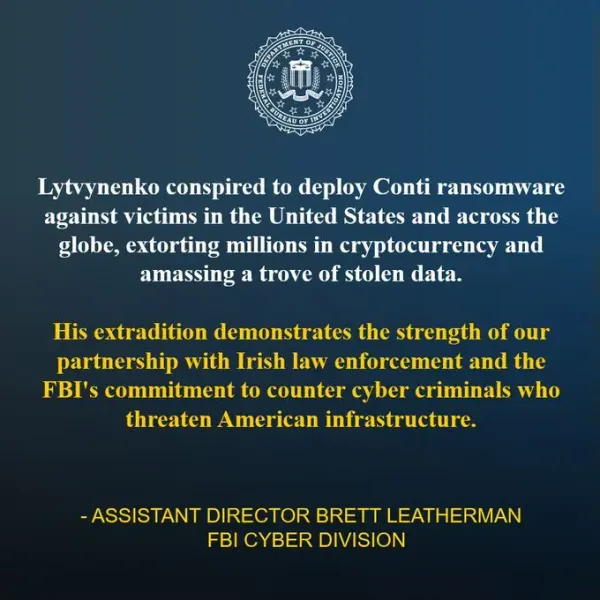Digital Highways Under Attack: Texas DOT Breach Exposes 300,000 Crash Records

How a compromised account became the gateway to one of the largest state government data breaches of 2025
On May 12, 2025, cybercriminals achieved what many would consider the perfect government data breach: maximum sensitive information with minimal effort and no ransom demands. The Texas Department of Transportation (TxDOT) discovered that hackers had exploited a compromised user account to download nearly 300,000 crash reports from the state's Crash Records Information System (CRIS)—a treasure trove of personal information that exposes fundamental vulnerabilities in how state governments protect citizen data.
This wasn't a sophisticated nation-state operation or a complex ransomware deployment. It was something far more concerning: a straightforward account compromise that highlights how everyday cybersecurity failures can lead to massive data exposures when they occur within critical government infrastructure.
The Breach Anatomy: Simple Methods, Massive Impact
The Texas DOT incident demonstrates how cybercriminals increasingly target government databases not for ransom payments, but for the valuable personal information they contain. The attack methodology was remarkably straightforward, making its success all the more troubling.
Attack Timeline and Discovery
- May 12, 2025: Unusual activity detected in CRIS system
- May 12-Unknown: Hackers download approximately 300,000 crash reports
- May 12 (Later): TxDOT disables compromised account
- June 6, 2025: Public disclosure and notification process begins
- Ongoing: Investigation continues, no arrests announced
The Compromise Method: The attack relied on a compromised user account—one of the most common and devastating vectors for government data breaches. While TxDOT has not disclosed how the account was initially compromised, common methods include:
- Credential Stuffing: Using previously breached passwords from other services
- Phishing Attacks: Deceiving users into revealing login credentials
- Social Engineering: Manipulating users to provide access information
- Insider Threats: Malicious or negligent actions by authorized users
- Third-Party Breaches: Compromise through connected vendor or contractor systems
Data Goldmine: What Was Stolen
The compromised crash reports contained a comprehensive collection of personally identifiable information that makes this breach particularly dangerous for affected individuals:
Personal Identifiers:
- Full names of drivers and vehicle occupants
- Home addresses and mailing addresses
- Driver's license numbers
- License plate numbers
Financial and Insurance Information:
- Car insurance policy numbers
- Insurance company details
- Vehicle registration information
- Potentially accident-related financial liability data
Incident Details:
- Crash descriptions and circumstances
- Location data for accidents
- Date and time information
- Injury details and severity assessments
Secondary Risk Factors:
- Vehicle make, model, and year information
- Police report numbers and investigating agencies
- Towing company and repair facility information
- Potentially medical provider information for injury cases
Government Infrastructure: The Unprotected Treasure Trove
The Texas DOT breach exposes a fundamental problem with government cybersecurity: state and local agencies maintain vast databases of sensitive citizen information but often lack the security infrastructure, expertise, and resources to protect these assets adequately.
Why Government Data Is So Valuable
Comprehensive Personal Profiles: Government databases contain information that criminals cannot easily obtain elsewhere:
- Official identity documents and verification data
- Home addresses with high confidence in accuracy
- Financial information linked to official government processes
- Historical data that can be used to establish identity patterns
- Cross-referenced information from multiple government agencies
High Data Quality: Unlike commercial databases that may contain outdated or inaccurate information, government records are typically:
- Verified through official processes
- Recently updated through legal requirements
- Cross-referenced with other authoritative sources
- Comprehensive in scope and detail
Legal and Financial Leverage: Government data provides criminals with information that can be used for:
- Identity Theft: Creating synthetic identities using real government-verified information
- Financial Fraud: Opening accounts and obtaining credit using official verification data
- Social Engineering: Using government-verified information to impersonate individuals
- Physical Crimes: Using address and vehicle information for stalking, burglary, or other crimes
The CRIS System: A Case Study in Government Vulnerability
Texas Transportation Code §550.062 requires TxDOT to maintain the Crash Records Information System (CRIS), which collects crash reports from law enforcement agencies statewide. This system represents a typical example of government databases that are essential for public safety but create significant cybersecurity risks:
System Characteristics:
- Legal Mandate: Required by state law, creating compliance rather than security focus
- Broad Access: Used by law enforcement, insurance companies, attorneys, and researchers
- Historical Data: Contains 10+ years of crash information
- Statewide Scope: Covers all Texas jurisdictions and law enforcement agencies
Security Challenges:
- Legacy Infrastructure: Often built on older systems with limited security features
- Multiple Access Points: Various users and organizations require different levels of access
- Compliance Focus: Emphasis on meeting legal requirements rather than security best practices
- Resource Constraints: Limited cybersecurity budgets and expertise in government agencies
The Economics of Government Data Theft
The Texas DOT breach illustrates how cybercriminals are shifting focus from high-profile ransomware attacks to quieter data theft operations that can be more profitable and less risky.
The Stolen Data Marketplace
High-Value Personal Information: The type of information stolen from TxDOT commands premium prices in cybercriminal marketplaces:
- Complete Identity Packages: $20-50 per individual record with comprehensive PII
- Driver's License Information: $5-15 per record for identity verification bypass
- Insurance Information: $10-25 per record for fraudulent claims or account takeovers
- Address Verification Data: $3-10 per record for physical mail fraud schemes
Bulk Sale Advantages: The 300,000 records stolen from TxDOT represent a significant bulk sale opportunity:
- Volume Discounts: Large datasets command higher per-record prices
- Geographic Concentration: Texas-specific data valuable for regional criminal operations
- Data Freshness: Recent crash data ensures information accuracy and relevance
- Cross-Reference Potential: Multiple data points per individual increase value
Secondary Criminal Applications
Identity Theft Operations:
- Synthetic Identity Creation: Combining real and fake information to create new identities
- Account Takeovers: Using verified personal information to compromise existing accounts
- Credit Fraud: Opening new credit accounts using government-verified identity information
- Tax Fraud: Filing fraudulent tax returns using stolen personal information
Physical Crimes:
- Vehicle Targeting: Using crash history and insurance information to identify valuable targets
- Home Invasion: Using address information combined with vehicle value assessments
- Stalking and Harassment: Using comprehensive personal information for malicious targeting
- Insurance Fraud: Creating false claims using real crash history and personal information
Systemic Government Cybersecurity Failures
The Texas DOT breach is part of a disturbing pattern of government cybersecurity failures that expose citizens to significant risks while highlighting systemic problems in public sector information security.
Common Government Vulnerability Patterns
Technical Infrastructure Challenges:
- Legacy Systems: Outdated technology platforms with limited security capabilities
- Integration Complexity: Multiple systems and databases with inconsistent security standards
- Patch Management: Slow or inconsistent application of security updates
- Network Segmentation: Insufficient isolation between systems and user access levels
Organizational and Resource Constraints:
- Limited Cybersecurity Expertise: Difficulty recruiting and retaining qualified security professionals
- Budget Constraints: Insufficient funding for comprehensive security infrastructure
- Competing Priorities: Security investments competing with direct citizen services
- Political Considerations: Pressure to minimize costs and maximize service delivery
Regulatory and Compliance Gaps:
- Inconsistent Standards: Varying cybersecurity requirements across different government levels
- Reactive Approaches: Focus on compliance rather than proactive threat prevention
- Limited Oversight: Insufficient auditing and monitoring of government cybersecurity practices
- Jurisdictional Confusion: Unclear responsibility for cybersecurity across different agencies
The Accountability Problem
One of the most troubling aspects of government data breaches is the limited accountability for cybersecurity failures:
Limited Legal Consequences:
- Sovereign Immunity: Government agencies often protected from lawsuits
- Political Accountability: Electoral cycles may not align with cybersecurity consequences
- Regulatory Enforcement: Limited oversight of government cybersecurity practices
- Criminal Prosecution: Rare prosecution of government officials for negligent cybersecurity
Citizen Impact vs. Government Consequences:
- Citizens Bear Risk: Individuals face long-term consequences of identity theft
- Government Continues Operations: Agencies typically face minimal operational consequences
- Cost Externalization: Society bears the cost of government cybersecurity failures
- Trust Erosion: Reduced citizen confidence in government's ability to protect personal information
Beyond Texas: The Broader Government Cyber Crisis
The Texas DOT breach is unfortunately representative of a broader crisis in government cybersecurity across the United States. Recent incidents highlight the systemic nature of these vulnerabilities:
Recent Government Breaches
State and Local Government Incidents:
- Colorado Department of Higher Education: 40,000 student records exposed through vendor breach
- Illinois Department of Healthcare and Family Services: 933 individuals affected by phishing attack
- Virginia Beach City Government: Multiple departments affected by ransomware attack
- Baltimore County Government: Public school systems disrupted by cyber attack
Federal Agency Challenges:
- OPM Data Breach Legacy: Continued impact from 2015 breach affecting 22 million federal employees
- Solar Winds Compromise: Ongoing challenges from supply chain attack affecting multiple agencies
- Exchange Server Vulnerabilities: Widespread exposure of government email systems
- Cloud Security Incidents: Growing risks as agencies migrate to cloud services
Systemic Vulnerabilities
Supply Chain Risks: Government agencies increasingly rely on third-party vendors and contractors, creating additional attack vectors:
- Vendor Security Standards: Inconsistent cybersecurity requirements for government contractors
- Access Management: Difficulty controlling and monitoring third-party access to government systems
- Integration Risks: Security gaps created when connecting government and vendor systems
- Oversight Challenges: Limited ability to monitor and audit vendor security practices
Shared Infrastructure Risks: Many government agencies share common infrastructure and systems, creating cascading failure risks:
- Shared Service Providers: Common vendors serving multiple government agencies
- Inter-Agency Systems: Connected systems that can spread compromises between agencies
- Standard Platforms: Common software and hardware platforms with shared vulnerabilities
- Information Sharing Networks: Systems designed for collaboration that can facilitate unauthorized access
Citizen Impact: The Human Cost of Government Cyber Failures
The victims of the Texas DOT breach face years of potential consequences from the exposure of their personal information, highlighting the real-world impact of government cybersecurity failures.
Immediate Risks
Identity Theft and Financial Fraud: The comprehensive nature of the stolen information creates significant risks:
- Credit Account Fraud: Criminals can use driver's license and address information to open new accounts
- Insurance Fraud: Policy numbers and personal information can be used for fraudulent claims
- Tax Fraud: Social Security numbers combined with addresses enable tax return fraud
- Benefits Fraud: Personal information can be used to fraudulently claim government benefits
Physical Security Risks: The combination of personal information and crash history creates unique physical security risks:
- Vehicle Targeting: Criminals can identify valuable vehicles and their owners' addresses
- Home Security: Knowledge of crash history and insurance information may indicate wealth
- Stalking Potential: Comprehensive personal information enables malicious targeting
- Workplace Targeting: Employment information may be derivable from crash report details
Long-Term Consequences
Credit and Financial Impact:
- Credit Score Damage: Identity theft can cause lasting damage to credit scores and financial standing
- Account Monitoring: Victims must invest time and money in ongoing monitoring of financial accounts
- Insurance Complications: Fraudulent claims may affect legitimate insurance coverage and rates
- Employment Impact: Background checks may be complicated by identity theft consequences
Privacy and Security Adaptations:
- Lifestyle Changes: Victims may need to alter behavior to protect against ongoing risks
- Technology Adoption: Investment in identity monitoring and protection services
- Government Interaction: Reduced willingness to provide information to government agencies
- Service Utilization: Decreased use of government online services due to security concerns
Legal and Regulatory Response
The Texas DOT breach highlights significant gaps in legal and regulatory frameworks for protecting government data and holding agencies accountable for cybersecurity failures.
Current Legal Framework Limitations
Notification Requirements: TxDOT's decision to notify affected individuals, despite claiming no legal requirement to do so, highlights inconsistencies in data breach notification laws:
- Varying State Requirements: Different notification standards across states
- Government Exemptions: Some laws exempt government agencies from notification requirements
- Timeline Inconsistencies: Varying timeframes for notification across jurisdictions
- Content Standards: Inconsistent requirements for what information must be included in notifications
Liability and Accountability:
- Sovereign Immunity: Government agencies often protected from civil lawsuits
- Insurance Coverage: Government agencies may not carry adequate cybersecurity insurance
- Individual Liability: Rare personal accountability for government officials involved in cybersecurity failures
- Compensation Mechanisms: Limited options for citizens to recover damages from government breaches
Needed Regulatory Reforms
Enhanced Security Standards:
- Mandatory Cybersecurity Frameworks: Standardized security requirements for all government agencies
- Regular Security Assessments: Mandatory audits and penetration testing of government systems
- Incident Response Requirements: Standardized procedures for detecting, responding to, and recovering from cyber incidents
- Employee Training Standards: Regular cybersecurity training requirements for all government employees with system access
Accountability Mechanisms:
- Personal Liability: Individual accountability for government officials responsible for cybersecurity
- Public Reporting: Regular public disclosure of government cybersecurity posture and incidents
- Citizen Compensation: Mechanisms for compensating citizens affected by government cybersecurity failures
- Independent Oversight: External auditing and oversight of government cybersecurity practices
Strategic Recommendations: Securing Government Data
The Texas DOT breach provides important lessons for improving government cybersecurity at all levels. Effective solutions require comprehensive approaches addressing technology, policy, and governance.
For Government Agencies
Immediate Security Improvements:
- Account Security: Implementation of multi-factor authentication for all system access
- Access Monitoring: Deployment of behavioral analytics to detect unusual access patterns
- Privilege Management: Regular review and certification of user access privileges
- Incident Response: Enhanced procedures for rapid detection and response to security incidents
Strategic Cybersecurity Investments:
- Infrastructure Modernization: Replacement of legacy systems with secure, modern alternatives
- Security Integration: Implementation of comprehensive security frameworks across all systems
- Threat Intelligence: Investment in understanding and preparing for relevant cyber threats
- Staff Development: Training and retention of qualified cybersecurity professionals
For Citizens and Organizations
Protective Measures:
- Identity Monitoring: Regular monitoring of credit reports and financial accounts
- Information Minimization: Limiting provision of personal information to government agencies when possible
- Account Security: Enhanced security measures for personal financial and government accounts
- Incident Awareness: Understanding of rights and remedies when affected by government data breaches
Civic Engagement:
- Accountability Advocacy: Supporting policies that hold government agencies accountable for cybersecurity
- Transparency Demands: Requiring government agencies to publicly report on cybersecurity posture
- Resource Support: Supporting adequate funding for government cybersecurity initiatives
- Standards Advocacy: Promoting consistent cybersecurity standards across all government levels
For Policymakers
Legislative Priorities:
- Comprehensive Standards: Development of consistent cybersecurity standards for all government agencies
- Accountability Frameworks: Legal mechanisms for holding agencies and officials accountable for cybersecurity failures
- Citizen Protection: Enhanced protections and remedies for citizens affected by government data breaches
- Resource Allocation: Adequate funding for government cybersecurity infrastructure and expertise
Oversight and Governance:
- Independent Auditing: Regular, independent assessment of government cybersecurity capabilities
- Public Reporting: Transparent reporting on government cybersecurity posture and incidents
- Best Practice Sharing: Mechanisms for sharing effective cybersecurity practices across agencies
- Continuous Improvement: Regular updates to cybersecurity standards based on evolving threats
The Path Forward: Rebuilding Trust in Government Data Protection
The Texas DOT breach represents a critical moment for government cybersecurity. Citizens entrust government agencies with vast amounts of sensitive personal information, often with no choice in the matter. When these agencies fail to protect this information adequately, they violate the fundamental social contract between government and citizens.
Technology Transformation
Government agencies must embrace modern cybersecurity technologies and practices:
- Zero Trust Architecture: Assuming all access requests are potentially malicious
- Continuous Monitoring: Real-time detection and response to security threats
- Cloud Security: Leveraging cloud providers' security expertise while maintaining control
- Automation: Using AI and machine learning to enhance threat detection and response
Cultural Change
More importantly, government agencies must undergo fundamental cultural changes:
- Security First: Making cybersecurity a primary consideration in all technology decisions
- Citizen Focus: Recognizing that protecting citizen data is a fundamental government responsibility
- Transparency: Open communication about cybersecurity posture, challenges, and incidents
- Accountability: Personal and organizational responsibility for cybersecurity outcomes
Collaborative Approach
Effective government cybersecurity requires collaboration across multiple stakeholders:
- Inter-Agency Cooperation: Sharing threat intelligence and best practices between agencies
- Public-Private Partnership: Leveraging private sector expertise and resources
- Citizen Engagement: Involving citizens in cybersecurity awareness and protection efforts
- International Coordination: Learning from and coordinating with cybersecurity efforts in other countries
Conclusion: The Digital Government Imperative
The Texas Department of Transportation's loss of 300,000 crash records represents more than a single agency's cybersecurity failure—it's a wake-up call for the entire government sector. As government services become increasingly digital and data-dependent, the consequences of cybersecurity failures will only grow more severe.
Citizens have no choice but to provide personal information to government agencies for essential services like vehicle registration, tax filing, healthcare, and education. This makes government agencies among the most privileged custodians of personal information in society—and therefore among the most responsible for protecting it.
The path forward requires fundamental changes in how government agencies approach cybersecurity. It requires investment in modern infrastructure, comprehensive training for government employees, and accountability mechanisms that ensure cybersecurity failures have real consequences.
Most importantly, it requires recognition that in the digital age, cybersecurity is not a technical issue that can be delegated to IT departments—it's a core governmental responsibility that affects every citizen's privacy, security, and trust in public institutions.
The Texas DOT breach should serve as a catalyst for these necessary changes. The question is not whether other government agencies have similar vulnerabilities—they almost certainly do. The question is whether we will address these vulnerabilities proactively or wait for the next breach to remind us of the urgent need for secure government digital infrastructure.
For the 300,000 Texans whose personal information was stolen, the damage is already done. For the millions of other Americans whose personal information sits in vulnerable government databases across the country, there is still time to act. The choice is ours, and the time is now.





